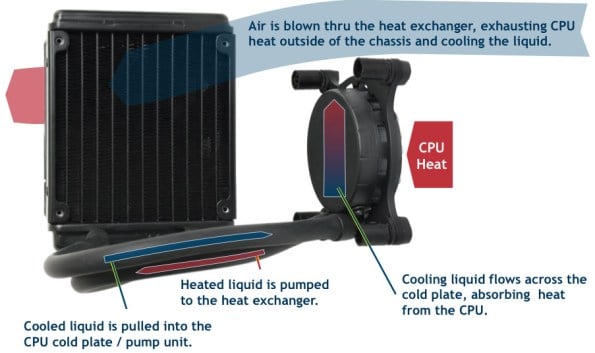Liquid Cooler Lineup: Intel, Corsair, MainGear Tested
Introduction
Over the last few years, we've seen an increasing number of liquid coolers positioned as high-end alternatives to traditional heatsink+fan combinations. This has been particularly true in the boutique market, where a number of manufacturers now offer liquid coolers in one form or another.
Corsair has a full line of liquid coolers; we've reviewed the company's H80 and H100 here and compared them to Intel's own liquid cooling solution as well as an ultra-high end model Maingear sent over. This last entry is specifically designed for integration into the company's systems rather than as an aftermarket purchase, but it's an interesting data point to have in the charts nonetheless.
Intel's LGA2011 and hexa-core Sandy Bridge-E processors were the logical choice for evaluating maximum thermal dissipation, particularly considering that all of the coolers we tested retail for $75 and up. Unfortunately, this limited our choice of comparison hardware as far as what we had on hand.As a result, we don't have any results from older / lower-cost CPU coolers that aren't compatible with Intel's new socket.
How Liquid Cooling Works:

The image above is from Asetek's website, but all of the liquid coolers we've tested function in the same basic manner. Water is pumped through the CPU cold plate and up to the radiator where a fan blows cool air over the fins and lowers the coolant's temperature. The now-cooled water flows down the return pipe and is again pushed over the coldplate.
Water is a far better conductor of heat than air, which is why you'll often see water coolers promoted as being more efficient solutions for high-end enthusiasts. Simply comparing the heat transfer characteristics of air and water, however, grossly oversimplifies the situation. Water coolers still rely on fans (in some cases, more than one) and they incorporate an electric pump that generates additional noise and an additional point of failure.
The kits we're reviewing today are a far cry from the water coolers enthusiasts have been building for years. DIY water coolers typically involve separate reservoirs and external pumps. The systems we've tested contain significantly less fluid and use small pumps directly integrated into the cooling block.
Integrated all-in-one kits may not offer the theoretical performance of a high-end home-built system, but they're vastly easier to install and require virtually no maintenance. The tradeoffs are more than fair, provided that the coolers perform as advertised.






